Last year in April, we visited Sicily and one of our stops has been Siracusa where we visited the Neàpolis archaeological park, a vast area that features a Greek theatre, a Roman amphitheatre1 and numerous ancient stone quarries called “latomie” that have also been used as prisons during the Roman Empire epoch.
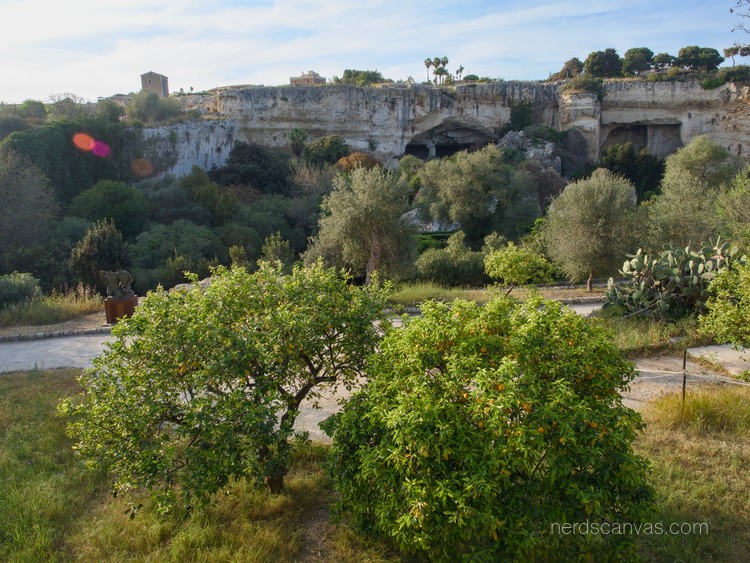
A view of the latomie area, ancient stone quarries exploited from the Ancient Greece period.
Despite it’s supposed to be the main highlight of the area, we have been quite disappointed by the Greek theatre, since it was almost completely covered by a modern and poorly maintained structure to allow it to be used for events and shows.
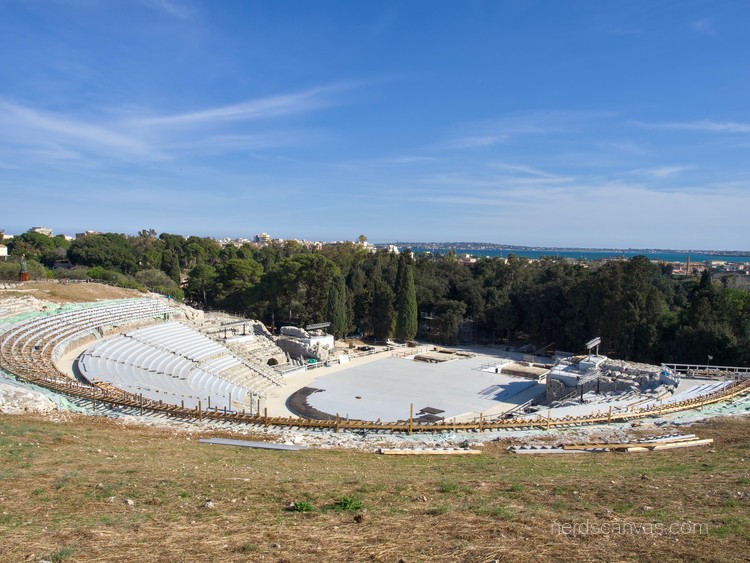
The Greek theatre built on a hill with a panoramic view towards the sea.
Hopefully later on, we visited the Latomie del Paradiso and the atmosphere here was completely different. The place was quiet and we were welcomed by a lush vegetation and the pleasant and sweet fragrance of orange blossom. It was the first time that we experienced the orange blossom perfume this intense in a natural setting and we will remember it forever. The other day, while peeling some Tardivo di Ciaculli mandarins, the smell of the fragrant peel immediately brought me back to Sicily. We enjoyed our visit to this archaeological site so much that we got some orange blossom perfume later to bring us back to this place when we miss the trip.

Walking among the lemon and orange trees.
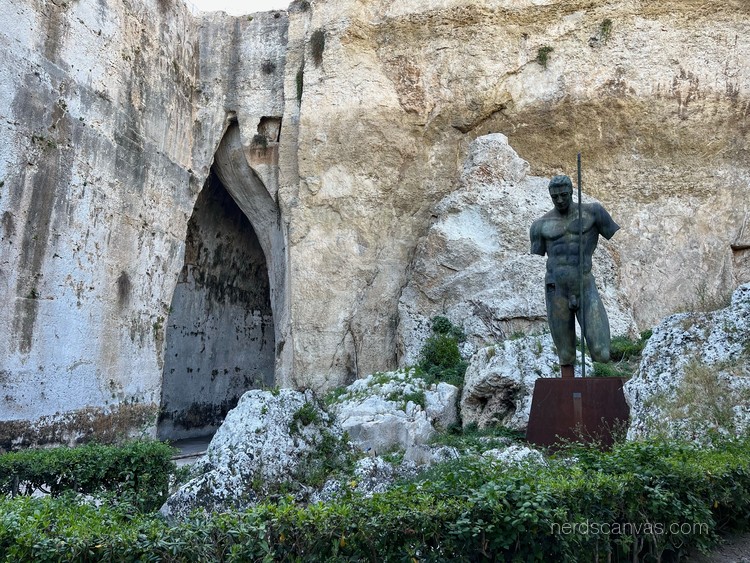
On the left, the famous Orecchio di Dionisio, named after the legend that the tyrant Dionysius I used its acoustics to overhear the conversations of the prisoners inside.
At the time of our visit, there was an open-air exhibit of sculptures by Igor Mitoraj. It was extraordinary and I believe the setting was perfect for those art pieces.
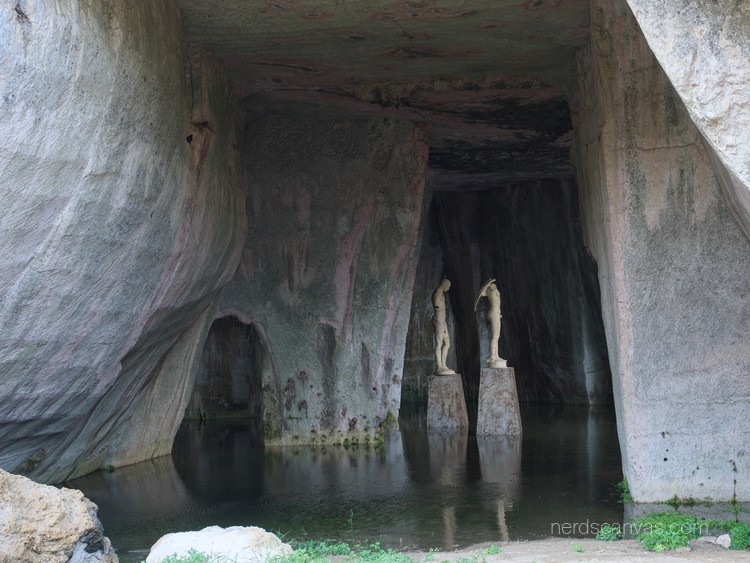
The Grotta dei Cordari once used for rope-making due to its ideal humidity.

The Grotta dei Cordari and its rock-hewn pillars.
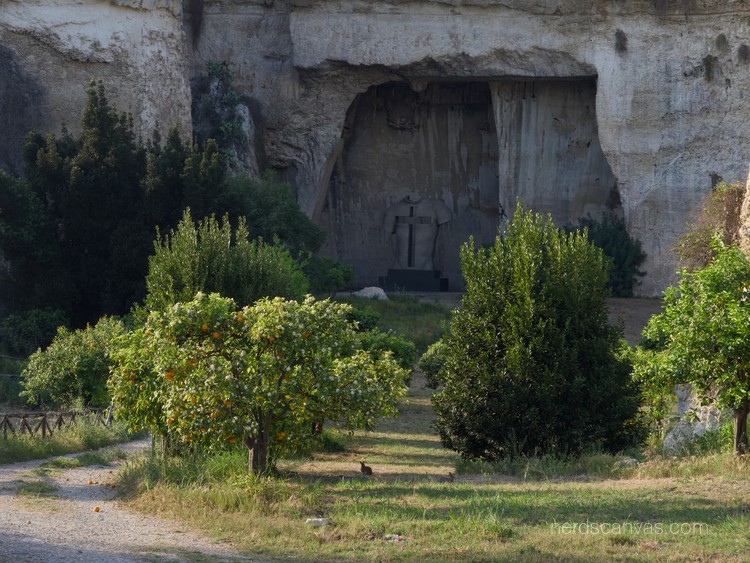
The latomia del Paradiso. Can you see the rabbits?

The citrus orchard.
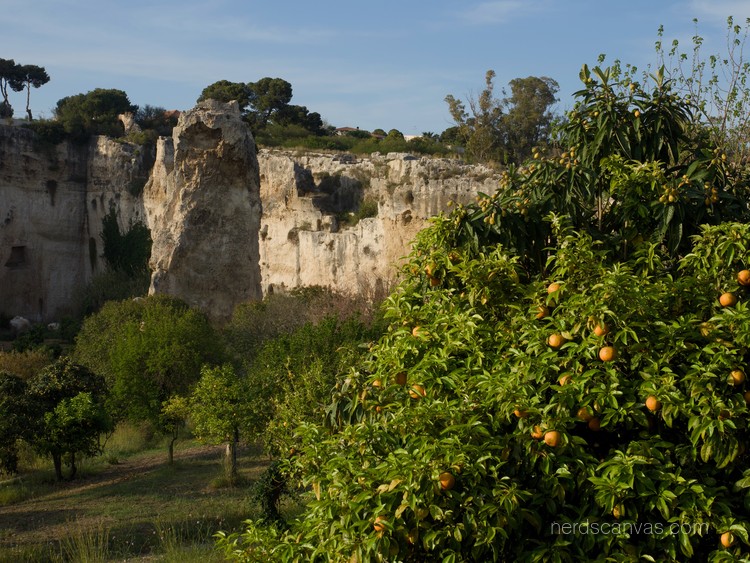
In the foreground, an orange tree and a loquat.
At the end we visited the Roman amphitheatre, and it was stunning both for its setting and the opportunity to observe some of its structures (which was a much better experience than the Greek theatre). We read in a guidebook2 that you can still see the names of the seat owners engraved on some stones. We tried to find them (even using binoculars), but we were unable to spot them.
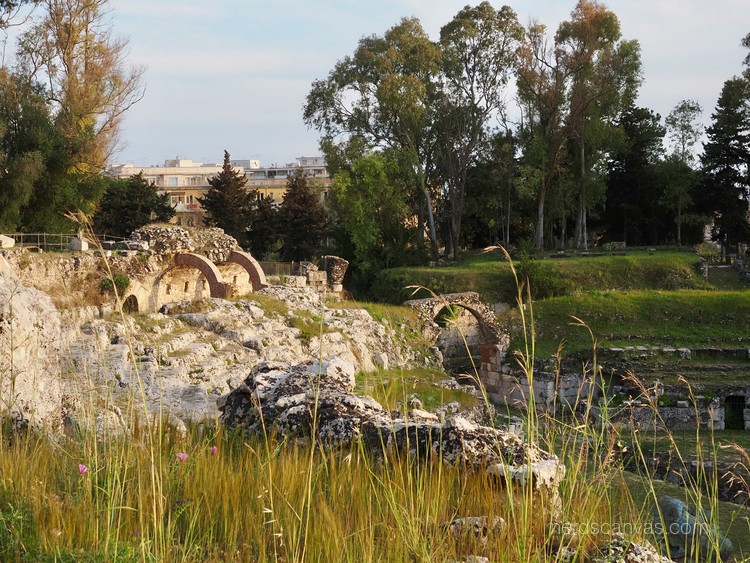
The Roman amphitheatre and its structures.
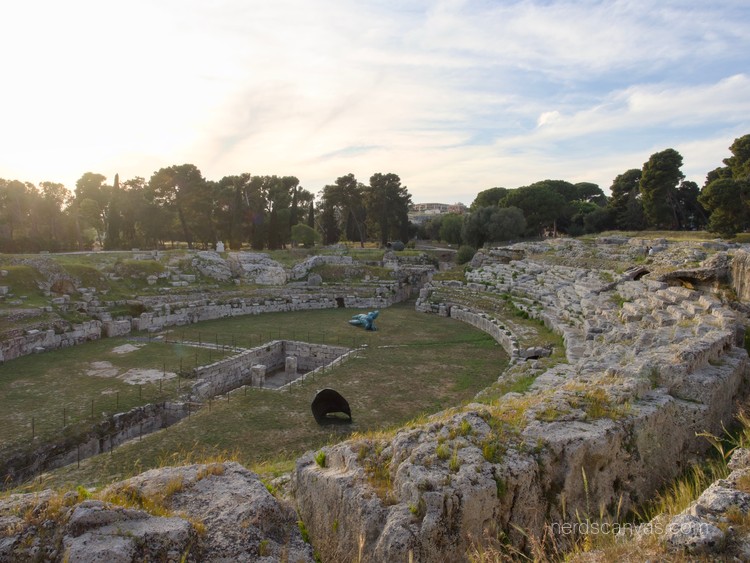
The Roman amphitheatre.
We almost missed the visit to the archaeological park because, during our walk, I wanted to stop to Chiesa di Santa Lucia al Sepolcro to admire The Burial of Saint Lucy painting by Caravaggio and also we didn’t actually expect the archaeological park to be so interesting and pleasant to walk.
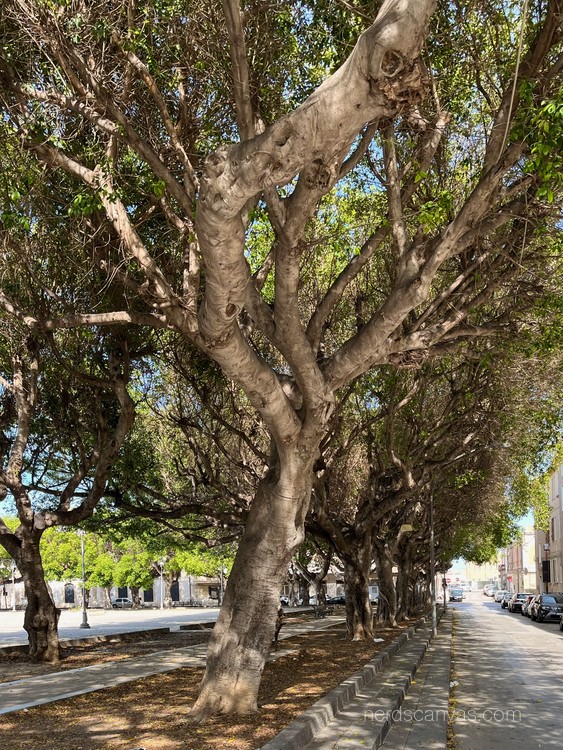
Ficus microcarpa trees aligned around Piazza Santa Lucia, close to Chiesa di Santa Lucia al Sepolcro.
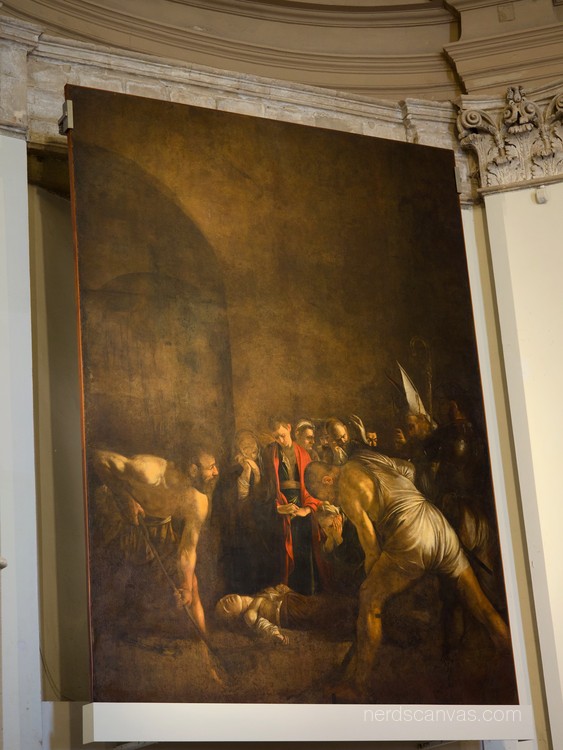
The Burial of Saint Lucy by Caravaggio.
